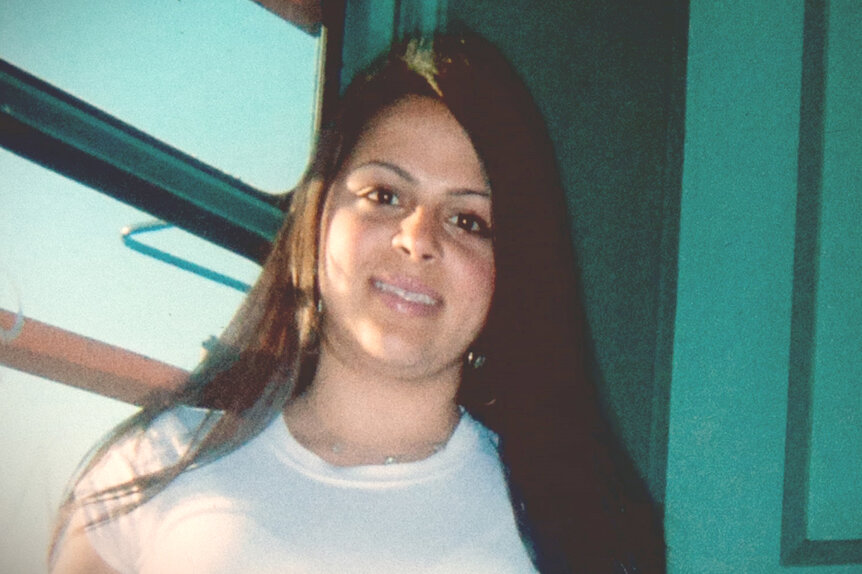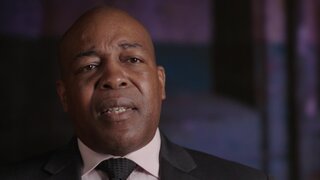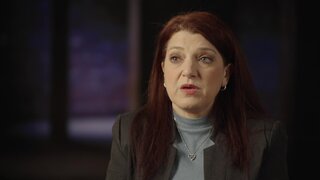Create a free profile to get unlimited access to exclusive videos, breaking news, sweepstakes, and more!
‘Puppet Master’ Brother Strangles His Teen Sister And Tries To Pin It On Her Ex-Boyfriend
Despite a duplicitous witness, detectives were able to discover who murdered an 18-year-old woman inside her Staten Island home.
After graduating from high school, 18-year-old Aliza “Lizzy” Parsy took a job in sales at a local moving company to earn money for college. She lived at home with her divorced mother, Sima, in a tight-knit Orthodox Jewish neighborhood in Staten Island.
Aliza’s future, along with her dream of being a fashion designer, was tragically cut short on August 10, 2005. Sima returned home that day to find it was ransacked. Aliza’s bedroom was locked. The frantic mom called 911.
Aliza, naked except for a towel, was “underneath a mattress … and she’d been killed,” New York Daily News editor Esha Ray told “New York Homicide,” airing Saturdays at 9/8c on Oxygen.
Det. Michael Kenny, of the NYPD’s Staten Island 122nd precinct, who’s now retired, arrived at the scene and found Aliza’s hair was still damp, indicating she’d recently come out of the shower. There were no bullet or knife wounds and no apparent bruising around her neck, he told producers.
Detectives scoured the crime scene for clues and found a droplet of blood evidence on the towel. Did it belong to the victim or the assailant? DNA in a case like this is essential, said Robert K. Boyce, former NYPD chief of detectives, adding that in 2005 it took weeks to process results.
Investigators discovered the back door of the house was unlocked, pointing to a possible robbery gone wrong. But the fact that her body was hidden under a mattress suggested the killer knew her.
To find her murderer, police needed to know more about Aliza. They questioned Sima, 52, who was divorced, and the teen’s half-brother Raviv Gabbay, 27, who was given the family cookie business as a wedding gift and lived in Brooklyn. Aliza’s other half-brother, Leo, and her father lived in Israel.
Sima had been at the office on the afternoon of the murder, she told detectives. Raviv was delivering cookies in Long Island, two hours from the home. They, like others interviewed by police, were both swabbed for DNA. Kenny asked Aliza’s family if they had any idea who was behind the murder. Raviv said to look at her ex-boyfriend.
“We learned from Raviv that he was of the Muslim faith … and his family didn’t support the relationship,” said Kenny. Investigators questioned Aliza's ex, who admitted they had rocky patches but expressed his hope to reconcile. He willingly gave a DNA sample.
Following the funeral, detectives reviewed autopsy results.
“The Medical Examiner’s Office ruled that Parsy’s death was a homicide by asphyxiation,” reported the New York Post, “noting that her mouth and nose had been covered and her neck compressed.”
The medical examiner also found evidence that Aliza had sexual intercourse no more than 24 hours before her death, according to “New York Homicide.” The lack of any physical trauma suggested that the sex was consensual. Detectives considered that possibility that consensual sex could have gone awry or that a fight broke out afterward.
To get a broader perspective, investigators interviewed Aliza’s friends. “We learned that she enjoyed meeting guys on the internet,” said Kenny, adding that the revelation raised red flags.
The NYPD's computer crime unit took a deep dive into Aliza’s digital life. On April 24 2005, two weeks after the murder, the arduous task raised a possible lead. Aliza had made plans to meet with a man the day before she was killed. She was going to leave the door to her home unlocked.
When police interviewed the individual he said he was there on August 9 and that he and Aliza had sex, and gave a DNA sample. Detectives cross-checked the timeline of his whereabouts using phone and Metrocard records.
But on September 13, results from the DNA analysis of the blood on the towel and from under Aliza’s fingernails showed that it was a match for a close male relative of Aliza's.
Further DNA analysis revealed that “the only possibility was that it was Raviv’s,” said Kenny with Boyce adding, “The whole time he'd been pointing us at the ex-boyfriend in order to deflect attention from himself."
To build the case, detectives traced Raviv’s travels on the day of the murder using bridge and highway cameras and tolls. He claimed he was on Long Island at the time of the murder, but evidence showed that he was actually on Staten Island near his mother’s house then.
On September 19, Gabbay came to the police station for questioning. His initial adamant denials eventually gave way to his admission of guilt.
The crime was tied to money. Gabbay believed that the cookie business wasn’t an ample enough gift. He had heard that his mother had come into some cash following the sale of a home in Israel. He came to the house “to burn his mother’s money,” reported slive.com.
Unaware that Aliza was upstairs showering, Gabbay came to the house and rummaged through his mother’s dressers. Aliza discovered him in the act and a fight ensued.
Raviv told police that Aliza jumped on his back and scratched him. He threw her off and that’s when she hit her head. He claimed it was accidental. “But the autopsy tells us a very different story,” detectives said.
Gabbay was arrested for his half-sister’s murder. “It’s jaw dropping,” said Teresa Leto, a retired NYPD detective with the Brooklyn South Homicide Squad. “He was like the puppet master through the whole case.”
Raviv Gabbay pleaded guilty to first-degree manslaughter and was sentenced to 18 years in prison.
For more on this case and others like it, watch “New York Homicide,”airing Saturdays at 9/8c on Oxygen or stream episodes here.






















